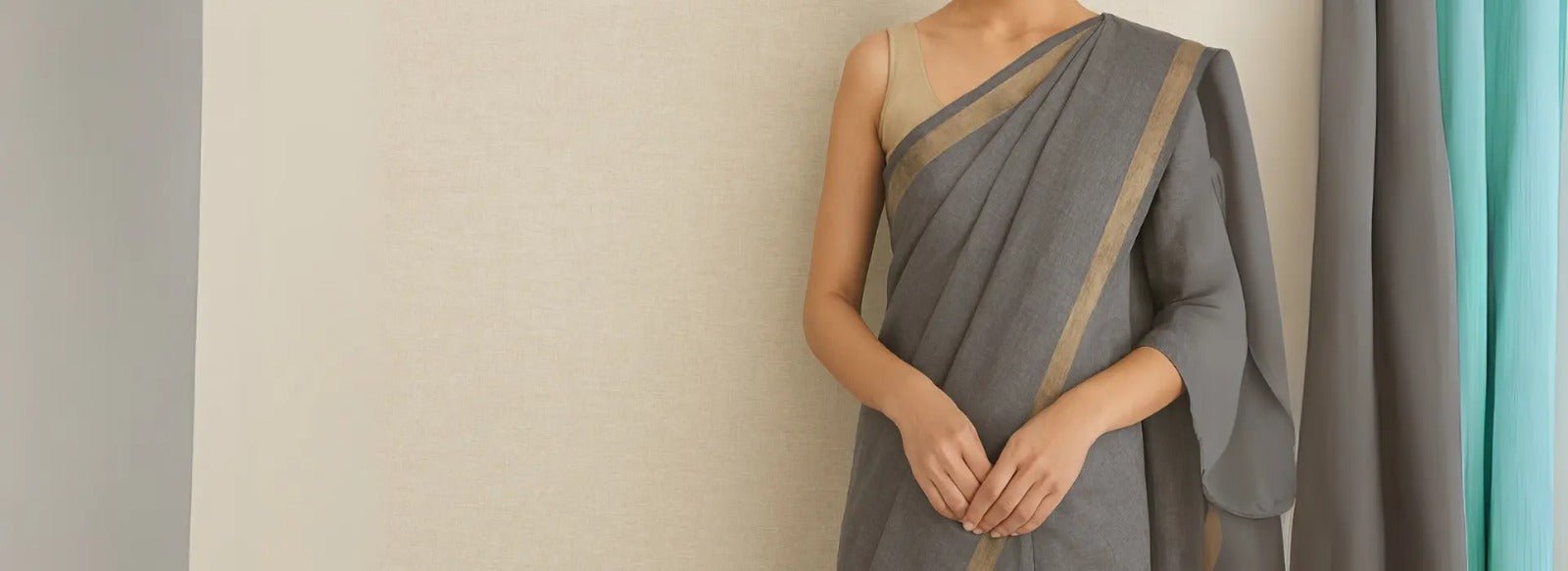Table of Contents
Linen sarees, renowned for their elegance and timeless appeal, have been a staple in Indian fashion for centuries. However, several myths surround these exquisite garments, leading to misconceptions that deter many from embracing their beauty and comfort. Let's unravel these myths and shed light on the truths about linen sarees.
Myth 1: Linen and Kota are the Same

A prevalent misconception is that linen and Kota fabrics are identical. In reality, they are distinct:
-
Linen: Derived from the flax plant, linen boasts natural fibers known for their strength and luster.
-
Kota: Originating from Kota, Rajasthan, Kota fabric is a blend of cotton and silk, characterized by its unique square check pattern.
Understanding this distinction is crucial for appreciating the unique qualities each fabric offers.
Myth 2: Linen Sarees are Uncomfortable Due to Stiffness
Some believe linen sarees are stiff and uncomfortable. While pure linen can be slightly stiff initially, it softens with each wash, becoming more comfortable over time. Additionally, blending linen with cotton or silk enhances softness without compromising durability.
Myth 3: High Thread Count Equals Higher Quality in Linen Sarees
Many assume that a higher thread count in linen sarees indicates superior quality. However, linen's quality is more about the fiber's origin and weaving technique than thread count. Linen fibers are naturally strong, and their quality is evident in the fabric's texture and sheen.
Myth 4: Linen Wrinkles Too Much to Be Practical
It's true that linen tends to wrinkle easily, but this characteristic adds to its natural charm and relaxed elegance. Many appreciate the lived-in look of linen's creases. Moreover, blending linen with cotton reduces creasing, balancing elegance and practicality.
Myth 5: Linen Sarees Are Only Suitable for Summer
While linen is celebrated for its breathability and cooling properties, making it ideal for summer, it's also suitable for cooler months. Linen's natural fibers provide warmth, and linen sarees can be designed for year-round wear with appropriate weaving techniques.
Myth 6: Linen Sarees Are Difficult to Care For
Some hesitate to invest in linen sarees due to perceived maintenance challenges. In reality, linen is easy to care for. Regular washing and occasional ironing (preferably when damp) can keep your linen saree looking pristine. Embracing its natural wrinkles can also reduce the need for frequent ironing.
Myth 7: All Linen Sarees Are the Same
Linen sarees come in various types, each offering unique qualities:
-
Pure Linen Sarees: Made entirely from flax fibers, these sarees are known for their natural sheen and strength.
-
Semi-Linen Sarees: A blend of linen and cotton, these sarees offer enhanced softness and reduced wrinkling.
-
Silk-Linen Sarees: Combining linen with silk produces a lustrous fabric for special occasions.
Understanding these variations helps select a saree that aligns with personal preferences and occasions.
Myth 8: Linen Sarees Are Not Durable
Contrary to this belief, linen is one of the most durable natural fibers. Its tensile strength ensures that linen sarees withstand regular wear and last for generations. Proper care further enhances their longevity.
With their rich history and enduring charm, Linen sarees deserve to be embraced without the cloud of misconceptions. By debunking these myths, we can appreciate the true essence of linen and its place in contemporary fashion. Whether it's the allure of pure linen or the comfort of blends, there's a linen saree for every enthusiast.
Ready to experience the elegance and comfort of linen sarees? Explore our curated linen collection, find the perfect piece that resonates with your style, and debunk the myths you've heard.




